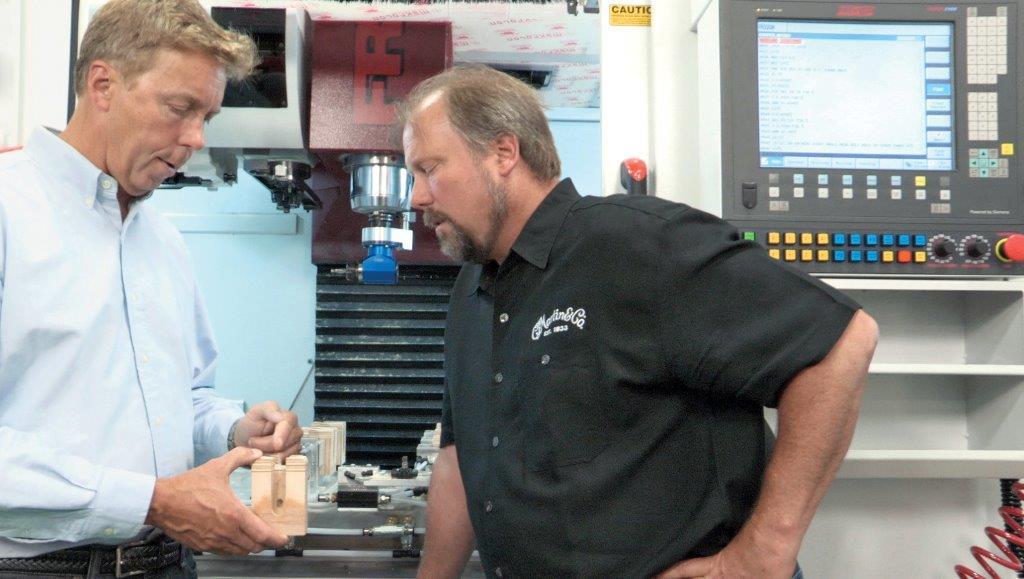
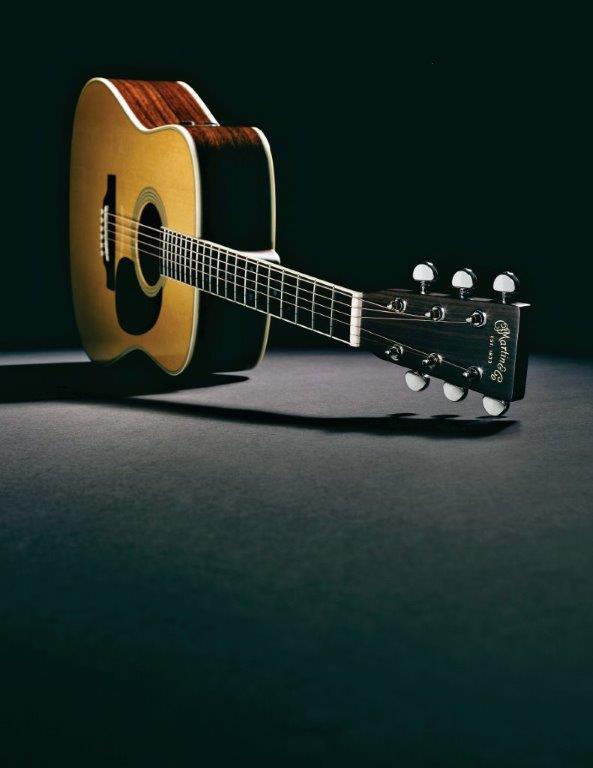
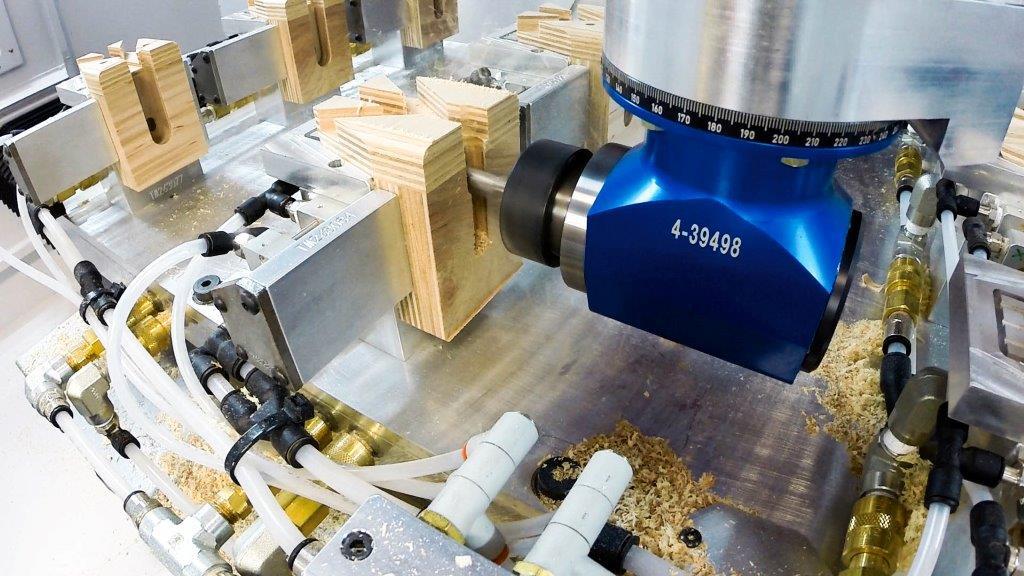
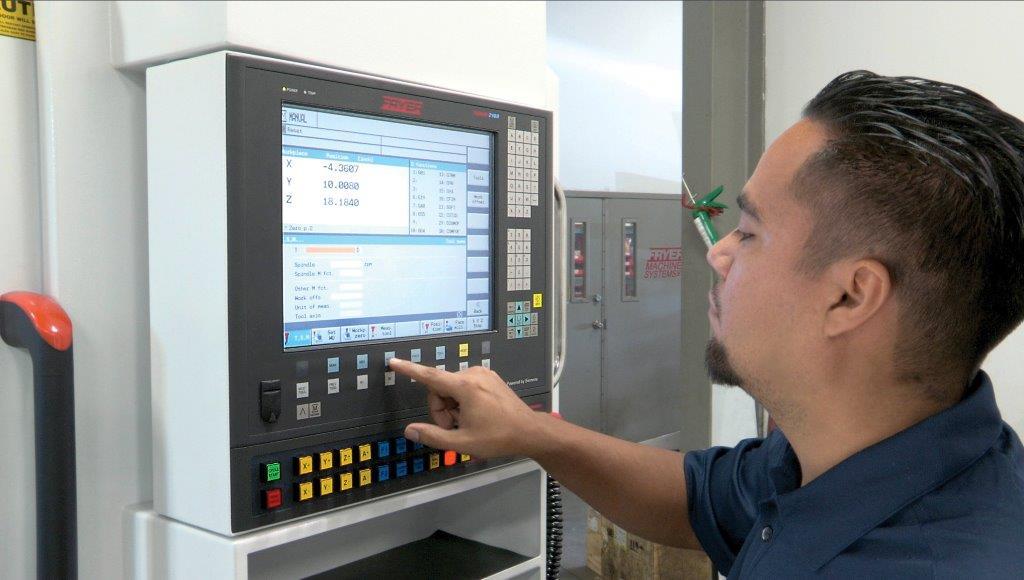
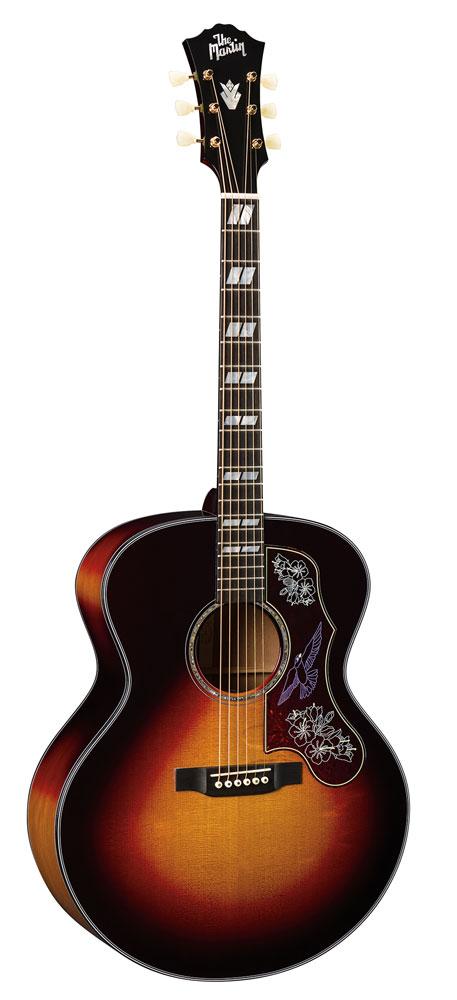
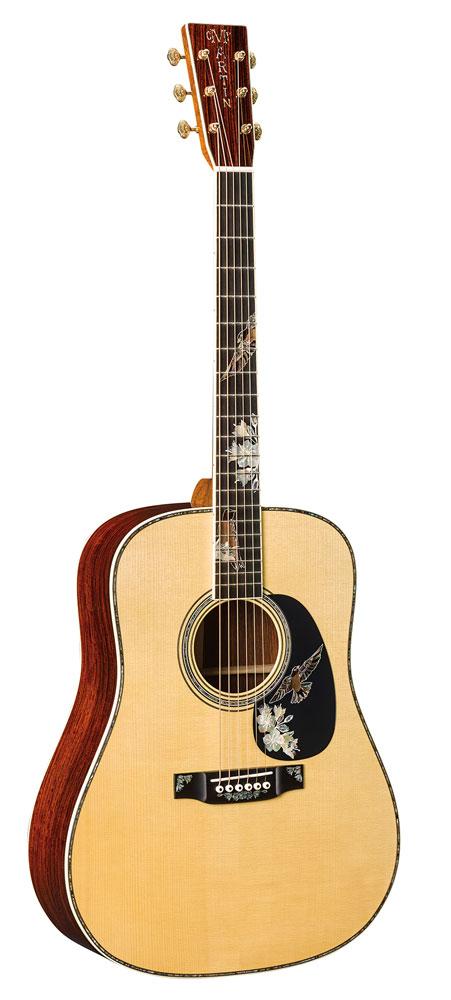
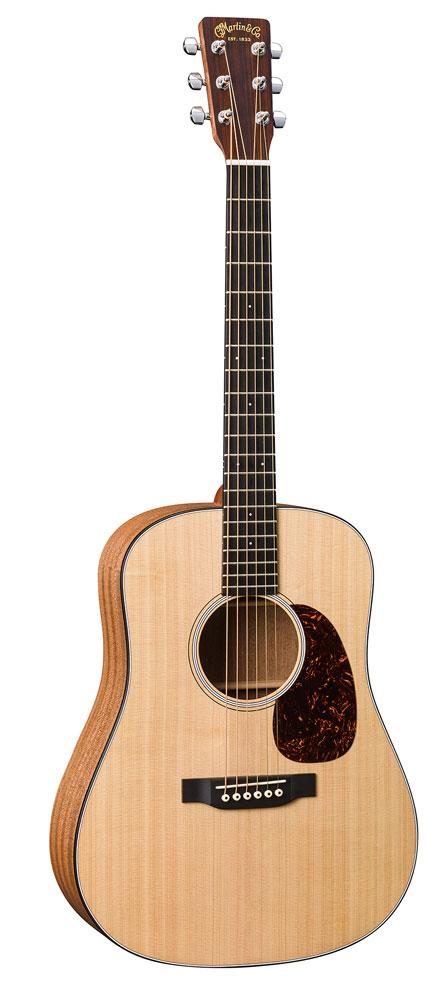
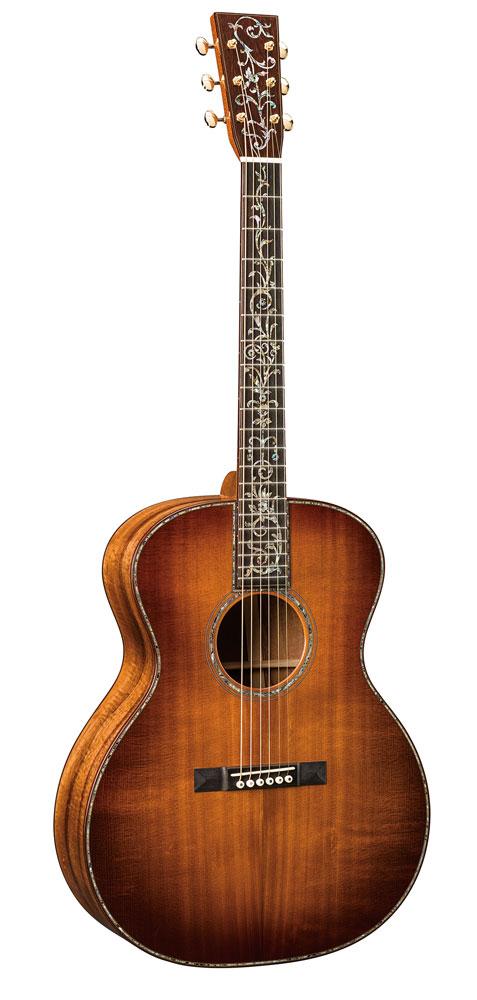
C.F. Martin & Co.’s ability to successfully string together the artistry and craftsmanship of fine woodworking, with the technology advances of CNC machinery, have enabled the acoustic guitar and string instrument manufacturer to continue its longtime reign in the industry.
C.F. Martin’s roots trace back to 1796, and the birth of Christian Frederick Martin in Markneukirchen, Germany. Born into a cabinetmaker family, at 15, Martin moved to Vienna and became an apprentice to renowned violin and guitar maker Johann Stauffer.
The right to manufacture musical instruments, including guitars, led to conflicts between two of Germany’s major guilds, the Cabinet Makers Guild and Violin Makers. According to C.F. Martin’s website, in 1833 the young Martin left Europe for better opportunities in the United States.
The early guitars were all handcrafted, one at a time, in a small shop located on the family’s homestead.
In 1859 a plant was built in Nazareth, PA, to accommodate the growing company’s needs. Still in existence, the original plant serves as a warehouse and shipping site, as well as the location for the company’s retail outlet, Guitarmaker’s Connection.
The current 84,000-square-foot factory is located nearby the original plant in Nazareth. It is there that C.F. Martin continues its long history of efficiently and sustainable producing quality-crafted, guitars.
Standardizing Craftsmanship
A host of music legends, such as Gene Autry, Johnny Cash, Elvis Presley, Joan Baez, Bob Dylan, Eric Clapton, Kurt Cobain and John Mayer, plus newcomers such as Ed Sheeran and Hunter Hayes, have all relied on the consistently distinctive tone, treble and bass specific to Martin acoustic guitars.
When Martin learned that one of its previous machine tool builders had exited the market, the company turned to Fryer Machine Systems for new equipment to cover a production increase. The company also seized the opportunity to upgrade the control technology with Sinumerik CNCs.
“We use right-angle head aggregates in our CNCs,” explains Mark Bickert, engineering project manager at Martin. “We needed to find a machine builder that could give us right-angle head aggregate capability in conjunction with right-angle head compensation and a high-RPM spindle.”
Fryer Machine Systems is a large purchaser of Siemens controls in the United States, and the customizable aspects of the company’s machines can often be attributed to the versatility of the Siemens controls on board. For this application particularly, Martin needed to be certain that the new machines would perform as expected.
“Anyone can sell you a machine with a controller on it and say, ‘Here you go,’” Bickert says. “But that’s not what happened this time. We were buying a machine through a Fryer dealership, and the machine had a Siemens control. Siemens invested their time in us during our transition and set-up. They really excelled.”
Bickert says a potential constraint to the transition was that all-new milling programs might need to be written for the Fryer machines, including the right-angle head cutter compensation programs, which were essential.
“Siemens not only gave us the right-angle head cutter compensation we wanted and the ability to do it properly, they also helped write the programs,” Bickert says. “They took the programs that we already had for cutting parts on our existing machines and reconfigured them to work in the Fryer machine with the Siemens controller.”
Guitar Body Castings Machined In-House
Having made a smooth transition to the company’s new Fryer-built machines last year, Martin has not skipped a beat in its ability to perform right-angle compensation milling. Martin now has eight Fryer/Siemens machines, utilizing one for the guitar maker’s tooling and machinery operations and seven for various other guitar production operations.
It is here, behind the scenes, that the company’s machinists reside and modern CNC technology and old-world craftsmanship come together to create the fixtures, tools and wherewithal that contribute to the mastery of Martin guitar making. It is also here that Martin found a way to bring previously outsourced operations in-house, a step that has helped the company to improve its repeatable production quality while reducing production costs.
“The machining of our castings had been another hurdle for us,” says Terry Kline, Martin’s manager of tooling and machinery. Until the company invested in the Fryer machines with the Siemens controls, Martin had outsourced the machining of its guitar body castings, with inconsistent results.
“Now we’re holding close tolerances on our guitar body castings,” Kline adds. “The quality of the castings is consistently accurate.”
Technology Meets Craftsmanship
According to Fred Greene, chief product officer, the company produces between 50,000 and 60,000 guitars a year. Depending on the build, production can take anywhere from 8 weeks to six months. There are approximately 500 employees at Martin’s manufacturing facility.
The plant is divided into production cells. In the rough mill area, for example, lumber is machined and readied into patterns for decks, backs, tops, etc. The wood components are then acclimated to 72 degrees and 45 percent humidity, ready for production. In a nearby location, the rims are hand-shaped and bent over a hot iron. The necks are also crafted to precise measurements. The parts come together in the custom shop. This is also where logos, inlays, and other custom features are added.
On a daily basis at Martin, Kline says, he sees what is possible when CNC technology and craftsmanship work together.
“Without CNC technology, we’d be still carving out all our necks by hand, and that’s just not efficient enough to compete in today’s world,” he adds.
The intersection of technology and craftsmanship has come naturally for this 181-year-old guitar company, without one side compromising the other.
“I think every manufacturing company needs to embrace technology,” Kline continues. “Technology and craftsmanship go hand-in-hand. People are amazed by how much handwork still goes into our guitars. We’ll build a neck and a body and then assemble the two elements together, which makes that guitar come to life.”
Sustainable manufacturing is another important element in the process. Approximately five years ago, Martin upgraded its finishing department to improve its efficiency and environmental friendliness. Among the key items were: the inclusion of a heat pipe energy recovery coil that captures heat from the exhaust air stream and uses it to preheat the incoming outside air; the use of instrumentation to monitor the VOC levels; and motion controlled T5 high output lighting that automatically turns off when the room is unoccupied. According to Martin, the energy recovery device within the curing room saves more than 10,000 therms of natural gas per year — more than 60 tons per year reduction in CO2 emissions.
Additional environmental efforts include the compacting of wood dust into briquettes, which are then taken to a cogeneration station and burned for energy. Along with recycling bins throughout the facility, the company also hosts an employee wood bin for scrap wood, which is then available for personal use by the employees.
Environmental Stewardship
Under the leadership of CEO and Chairman of the Board, Christian Frederick (Chris) Martin IV, the company has continued its long-standing commitment to corporate responsibility and environmental stewardship.
In addition to adhering to the Convention on International Trade in Endangered Species of Wild Fauna and Flora (CITES), Martin maintains Forest Stewardship Council Chain-of-Custody certification and is audited annually for compliance.
The company’s sustainability is also certified through the Rainforest Alliance. According to the company, it was one of the first acoustic guitar manufacturers to produce a model comprised entirely of FSC-certified woods. The D Mahogany features mahogany neck, back and sides, an alpine spruce soundboard and katalox fingerboard and bridge.
Also, in 2013, the company made the decision to stop using Preserved Mammoth Ivory (PMI) and implemented a plan to phase out the material all its models. Martin is also a Founding Partner for The Nature Conservancy’s #SaveElephants campaign. In a statement, Chris Martin said, “Forty-five years ago we phased out the use of ivory. And yet today I’m still concerned about the horrible slaughter of elephants. This is a terrible shame and it should stop. And the only way it is going to stop is if people stop buying and using ivory.”
Product Innovations
Both from a production as well as product standpoint, Martin continues to evolve with the times. The company also deserves recognition for its numerous instrument innovations.
Among the earliest was the development of the 14-fret neck back in 1929, which has since become an industry standard for American guitar design.
Another “trademark” for Martin is the Dreadnought guitar, which derived its name from World War I British battleships. Known for their “large body and booming bass,” the guitars debuted in 1916. Designed by Frank Martin and Harry Hunt, a manager at then music retailer Chas. H. Ditson Co., the Dreadnought guitars have been incorporated into Martin’s lineup since 1931. According to the company’s website, “virtually every maker of acoustic guitars, both domestic and foreign, has introduced a version of this original Martin design.”
Take a tour of Martin Guitars via the Made Right Here web series made in partnership with Maxwell House. Video posted on YouTube






Have something to say? Share your thoughts with us in the comments below.